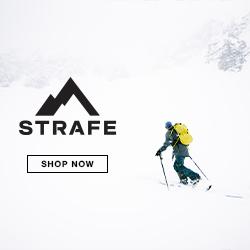December 2, 2012
Blog: November Faceting Period
Brett Kobernik
I've been trying to think of a way to discuss the faceting period that occurred from November 20 to Dec 1 and haven't really come up with anything. But, I did have an interesting email conversation with Greg Gagne, one of our top observers, on this subject that I thought some folks might find interesting. Greg Gagne Dec 1 (2 days ago) to me Hey Brett - Got out htis morning and was curious what the faceted snow looked like underneath the new snow. Am putting together an obs, but curious your thoughts on the preserved facets. Small grains (.5 mm) that under the …
Read more November 25, 2012
Blog: How to Read the Advisory
Bruce Tremper
If you look at avalanche advisories other English-speaking countries like Canada and New Zealand, they will look similar to our advisory. Most elements of this look actually started in Utah and spread to many other parts of the world and evolved in the process. Now, it's our turn to match the look that other countries have gravitated towards. In the summer of 2012, many of the U.S. avalanche centers in our region met to negotiate a common look including Wyoming, Idaho California and Colorado. Eventually, you should see these areas adopt the same look and menu …
Read more November 23, 2012
Blog: Ottos Pit
Toby Weed
I stopped to look at the snow, and when I was done with my test pit I turned around to see that Otto's pit was just as big and as deep as mine. Unfortunately, he also found weak faceted or sugary snow in his pit. The base layer dosen't look all that good anymore, and a forecast week of high pressure isn't going to help things much. Otto's pit clearly shows a fairly weak shallow snowpack plagued by sugary faceted snow. The weakest snow is the top few inches comprised of grapple and newly formed small-grained facets called …
Read more November 20, 2012
Blog: Snowpack Investigation - Detective Work at Targeted Sites
Evelyn Lees
When I head out for a field day, I've always got a "hit list" - it's bad snow I'm looking for, always looking for the worstsnow there is.People don't trigger avalanches where thestrong snow is,they trigger them from the weak spots. So it's a very focused,detective work,trying to discover where theworst snow is hiding.In SWAG(Snow, Weather and Avalanche Guidelines) this is known as "targeted site selection", and I'm doing test profiles - collecting the type and amount of information that I want. I often walk away from a snow pit I've started digging when I realize I'm not …
Read more November 20, 2012
Blog: Playing with Fire – A Case Study of the March 4, 2012 Temperature/Solar Radiation – Induced Dry Slab Natural Avalanche Cycle and its Practical Implications for Forecasting
Drew Hardesty
A few people have suggested that I condense my Utah Snow and Avalanche Workshop presentation from early November into an article. There are very few well documented cases of dry snow avalanches being triggered by warming. What you see below will also be in this spring's periodical of the American Avalanche Association,The Avalanche Review. Synopsis - Case study of Sunday March 4, 2012. All the natural and human triggered slides that stemmed from Heat/Solar Radiationinduced deformation on a conditionally unstable snowpack. A powerful Pacific storm shook the Wasatch over …
Read more November 15, 2012
Blog: Early season snow cover in the Bear River Range
Toby Weed
With only 8 inches of total snow on the stake at the Tony Grove Snotel, backcountry snow conditions are obviously shallow. Even so, you can find slopes at the highest elevations with smooth underlying ground and enough snow for a bit of early season fun. We found a few pockets of skiable terrain today on Cornice Ridge, west of and above Tony Grove Lake. Only north facing slopes above around 8500 feet in elevation have enough snow, since snow from October survived only on upper elevation shady slopes. Unlike our lucky southern neighbors in the Central Wasatch Range who …
Read more November 12, 2012
Blog: A couple of EXCELLENT powder days
Brett Kobernik
Well, I just wrapped up the second of two very good powder days. The first I spent with my colleague Drew and we both agreed that after last year, we both really needed to take a day off and have a day full of low density, in your face snow. We have been skiing and snowboarding some steep terrain with no avalanche problems. But wait!! Hasn't the avalanche danger been CONSIDERABLE?!! Yes it has. However, this does not apply to all of the terrain out there and you need to read and digest more to understand how to get good …
Read more 


